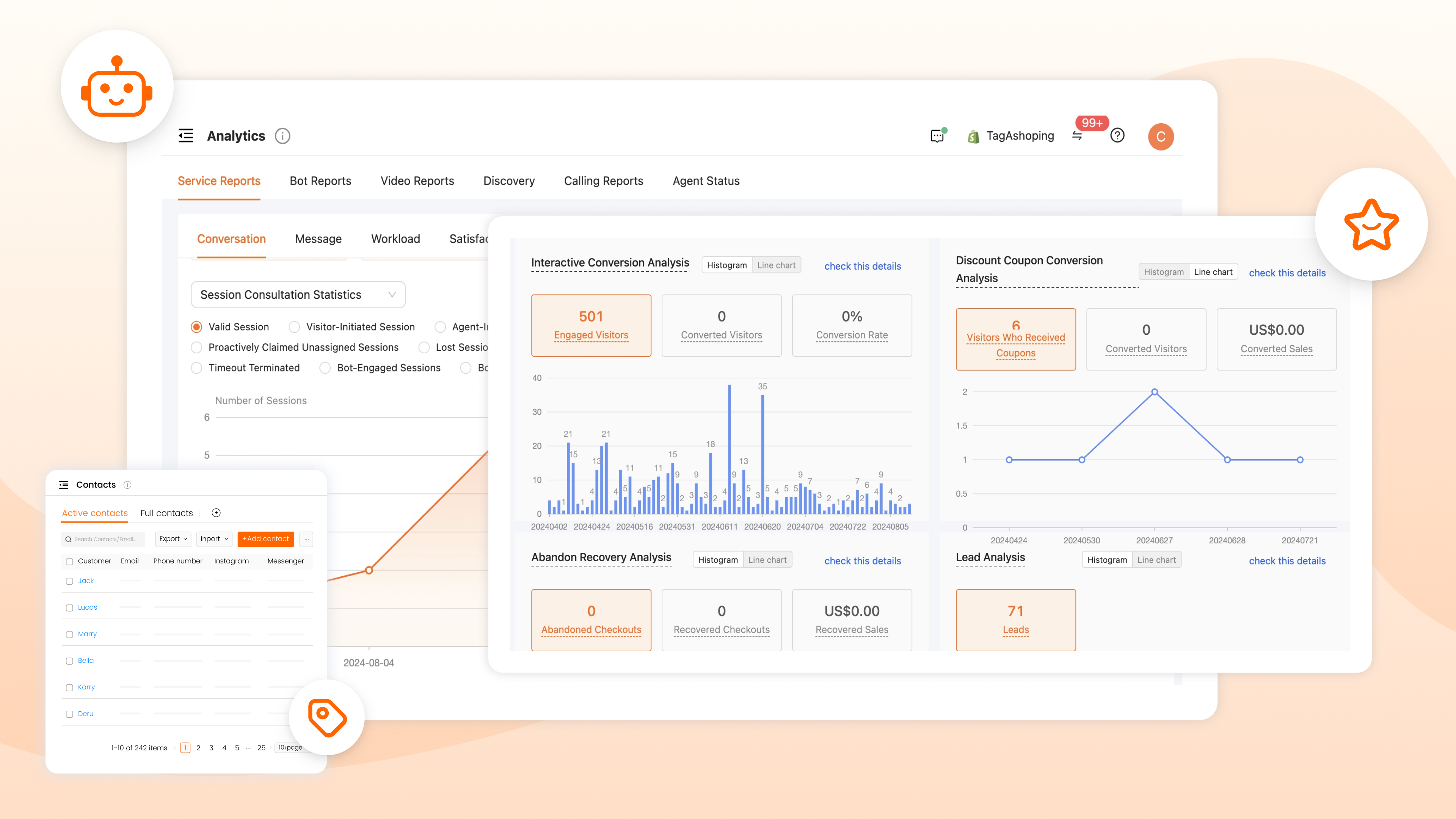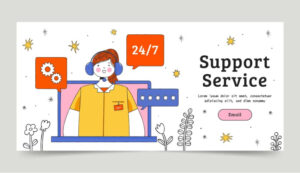Customer acquisition stands as a cornerstone for startup success. Startups often face challenges due to limited funding and visibility. New customers cost 5 to 10 times more than retaining existing ones. Startups spend an average between $0.28 and $0.94 to get $1 in new revenue. Estimating and monitoring customer acquisition costs (CAC) becomes crucial. If customer acquisition does not outpace churn, growth slows down. Mastering customer acquisition strategies ensures that startups thrive in competitive markets.
Laying the Foundation for Customer Acquisition
Defining the Target Audience
A clear understanding of your target audience forms the bedrock of successful customer acquisition. Identifying who will benefit from your product or service ensures that marketing efforts hit the mark.
Creating Buyer Personas
Creating buyer personas involves crafting detailed profiles of ideal customers. These personas include demographics, interests, and pain points. This process allows you to tailor marketing messages that resonate with potential customers. Startups often use case studies to illuminate the needs and desires of their audience. Case studies provide insights into what customers seek and how products can meet those needs.
Determining Market Size
Determining market size helps in assessing the potential reach of your product. Accurate market sizing informs strategic decisions and resource allocation. Understanding the market size prevents wasted marketing efforts and missed growth opportunities. Startups gain a competitive edge by knowing the scope of their audience.
Setting Clear Goals
Clear goals guide your customer acquisition strategy. Goals provide direction and help measure success.
Short-term vs Long-term Goals
Short-term goals focus on immediate results. These goals might include increasing website traffic or generating leads. Long-term goals aim for sustained growth and brand recognition. Balancing both types of goals ensures a comprehensive approach to customer acquisition.
Aligning Goals with Business Objectives
Aligning goals with business objectives ensures that every effort contributes to overall success. Business objectives might include expanding market share or enhancing customer satisfaction. Consistent alignment keeps the team focused and motivated.
Selecting Appropriate Channels
Choosing the right channels is crucial for effective customer acquisition. The right channels connect you with your target audience efficiently.
Evaluating Channel Effectiveness
Evaluating channel effectiveness involves analyzing performance metrics. Metrics such as conversion rates and engagement levels indicate which channels deliver results. Regular evaluation helps optimize marketing strategies and allocate resources wisely.
Multi-channel Strategy
A multi-channel strategy leverages various platforms to reach a broader audience. Social media, email marketing, and content marketing work together to enhance visibility. A diverse approach maximizes opportunities for customer engagement and acquisition.
Implementing Effective Customer Acquisition Strategies

Content Marketing
Content marketing plays a vital role in customer acquisition. High-quality content attracts and engages potential customers.
Creating Valuable Content
Create valuable content that resonates with your audience. Focus on delivering information that solves problems or answers questions. Use storytelling to connect emotionally with readers. This approach builds trust and encourages engagement. Various experts emphasize the importance of crafting content that appeals to your target audience. Avoid irrelevant or boring material. Keep content accessible and engaging.
Content Distribution Channels
Distribute content through multiple channels to maximize reach. Social media platforms, blogs, and newsletters serve as effective avenues. Each channel offers unique opportunities for engagement. Tailor content to fit the platform’s audience. Experts suggest leveraging different formats to enhance impact. Videos, infographics, and articles cater to diverse preferences. This strategy ensures broad visibility and attracts a varied audience.
Search Engine Marketing
Search engine marketing enhances online visibility. A strong presence in search results drives traffic and boosts customer acquisition.
SEO Best Practices
Implement SEO best practices to improve search rankings. Optimize content with relevant keywords. Enhance site speed and user experience. Experts recommend focusing on meta tags and descriptions. These elements entice users to click on search results. Regular updates and analysis keep strategies effective. Stay informed about algorithm changes to maintain high rankings.
Pay-Per-Click Advertising
Pay-per-click (PPC) advertising offers immediate visibility. Target specific keywords to reach potential customers. Set a budget and monitor campaign performance. Adjust strategies based on data insights. PPC complements organic strategies by filling gaps in visibility. This dual approach maximizes customer acquisition efforts.
Social Media Marketing
Social media marketing connects you with a vast audience. Engage users and build relationships through strategic content.
Platform Selection
Select platforms that align with your audience’s preferences. Facebook, Instagram, and LinkedIn cater to different demographics. Research each platform’s strengths and user base. Choose those that offer the best potential for engagement. Experts highlight the importance of understanding where your audience spends time. This knowledge guides platform selection and strategy development.
Engaging Content Creation
Create engaging content that captures attention. Use visuals, polls, and interactive elements to encourage participation. Respond to comments and messages promptly. Building a community fosters loyalty and trust. Experts stress the value of crafting content that sparks interaction. This approach strengthens connections and enhances customer acquisition.
Email Marketing
Email marketing stands as a powerful tool for startups. You can directly reach potential customers and nurture relationships over time. This approach provides a cost-effective way to communicate with your audience. You can deliver personalized messages that resonate with individual needs and preferences.
Building an Email List
Building an email list forms the foundation of successful email marketing. Start by offering valuable incentives to encourage sign-ups. Free resources, discounts, or exclusive content attract subscribers. Ensure that your sign-up process is simple and straightforward. A clear call-to-action on your website or social media channels boosts sign-up rates.
Segment your email list based on demographics, interests, or behaviors. Segmentation allows you to tailor messages for specific groups. Personalized emails increase engagement and conversion rates. Regularly update and clean your email list to maintain its quality. Remove inactive subscribers to improve deliverability and open rates.
Crafting Effective Campaigns
Crafting effective email campaigns requires a strategic approach. Start with a compelling subject line that grabs attention. The subject line serves as the first impression and determines whether recipients open the email. Use concise and engaging language to pique curiosity.
Focus on delivering valuable content within the email body. Provide solutions to common problems or share insights relevant to your audience. Include clear calls to action that guide recipients toward desired actions. Whether it’s visiting your website or making a purchase, make the next step obvious and easy.
Design plays a crucial role in email campaigns. Use visually appealing templates that align with your brand identity. Ensure that emails are mobile-friendly, as many users access emails on their smartphones. Test different elements, such as images or buttons, to optimize performance.
Analyze campaign results to refine your strategy. Track metrics like open rates, click-through rates, and conversions. Use data insights to identify what works and what needs improvement. Continuous optimization enhances the effectiveness of your email marketing efforts.
Engaging with the Community for Customer Acquisition

Utilizing Social Media
Social media offers a powerful platform to engage with your community. Building a strong online presence attracts potential customers. Consistent interaction fosters trust and loyalty.
Building a Community
Start by creating a welcoming environment on social media platforms. Encourage discussions related to your brand or industry. Use polls and questions to spark conversations. Share user-generated content to make followers feel valued. Highlight customer stories and experiences. This approach builds a sense of belonging among your audience.
Engaging with Followers
Engagement with followers strengthens relationships. Respond promptly to comments and messages. Show appreciation for feedback and suggestions. Host live sessions to address questions in real-time. Offer exclusive content or promotions to active participants. This strategy keeps followers interested and engaged.
Collaborating with Influencers
Influencer collaborations expand your reach and credibility. Influencers have established trust with their audience. Partnering with them introduces your brand to new potential customers.
Identifying Relevant Influencers
Identify influencers who align with your brand values. Research their audience demographics and engagement levels. Choose influencers with a genuine connection to your industry. Analyze past collaborations to assess compatibility. This ensures that partnerships resonate with both audiences.
Structuring Partnerships
Structure partnerships that benefit both parties. Define clear goals and expectations from the collaboration. Offer incentives that motivate influencers to promote your brand. Provide creative freedom to maintain authenticity. Monitor the partnership’s impact on customer acquisition. Adjust strategies based on performance metrics.
Building Credibility to Enhance Customer Acquisition
Customer Testimonials and Reviews
Collecting Feedback
Collect feedback from customers to gain valuable insights. Use surveys, interviews, or online reviews to gather opinions. Encourage honest responses by creating a welcoming environment. Customers appreciate when businesses value their input. Feedback helps identify strengths and areas for improvement. Implement changes based on customer suggestions to enhance satisfaction.
Showcasing Testimonials
Showcase testimonials to build trust with potential customers. Display positive reviews prominently on your website or marketing materials. Highlight specific benefits that customers experienced. Authentic testimonials provide social proof and credibility. Potential customers feel more confident in their purchasing decisions. Use real names and photos to add authenticity to testimonials.
User-Generated Content
Encouraging Customer Participation
Encourage customer participation to create user-generated content. Host contests or challenges that invite customers to share experiences. Offer incentives like discounts or exclusive access to motivate participation. Customers enjoy being part of a community and sharing their stories. User-generated content adds diversity and authenticity to marketing efforts.
Leveraging Content for Marketing
Leverage user-generated content for marketing purposes. Share customer-created content on social media platforms. Highlight customer stories in newsletters or blog posts. User-generated content provides fresh perspectives and engages audiences. Customers feel valued when businesses acknowledge their contributions. This strategy strengthens brand loyalty and attracts new customers.
“These success stories of social media influencers prove how hard work, determination, and forging connections can bring success.” — Afluencer
Influencers often share user-generated content to connect with audiences. Their stories inspire others to engage and participate. Businesses benefit from the authenticity and reach of influencer collaborations. Embrace user-generated content as a powerful tool for customer acquisition.
Retention and Optimization in Customer Acquisition
Retention Strategies
Referral Programs
Referral programs offer a powerful way to retain customers. Encourage satisfied customers to refer friends and family. Provide incentives like discounts or exclusive offers for successful referrals. This strategy not only retains existing customers but also attracts new ones. A well-executed referral program can significantly boost customer acquisition.
Loyalty Initiatives
Loyalty initiatives foster long-term relationships with customers. Implement a rewards program where customers earn points for purchases. Offer special perks or early access to new products for loyal customers. Recognize and appreciate repeat customers to enhance their loyalty. Loyalty initiatives create a sense of belonging and encourage continued engagement.
Optimizing Websites
User Experience Enhancements
Enhancing user experience on your website is crucial for customer retention. Ensure that the website is easy to navigate and visually appealing. Optimize loading times to prevent users from leaving due to delays. Implement clear calls to action that guide visitors toward desired actions. A seamless user experience keeps customers engaged and encourages return visits.
Conversion Rate Optimization
Conversion rate optimization focuses on turning visitors into customers. Analyze user behavior to identify areas for improvement. You can use QuickCEP to gain deep insights into website customer behavior patterns and make timely adjustments to your strategy. Test different elements, such as headlines or buttons, to see what resonates best. Use data insights to refine strategy and enhance conversion rates. Effective optimization efforts lead to increased customer acquisition and retention.

Tracking Success Metrics
Key Performance Indicators
Tracking key performance indicators (KPIs) provides valuable insights into your strategies. Monitor metrics like customer lifetime value, churn rate, and customer satisfaction. Use these KPIs to assess the effectiveness of your retention efforts. Regularly review and adjust strategies based on KPI performance. Data-driven decisions ensure continuous improvement in customer acquisition.
Data-Driven Decision Making
Data-driven decision-making empowers you to optimize strategies effectively. Collect and analyze data from various sources, such as website analytics or customer feedback. Identify trends and patterns that inform strategic adjustments. Use data to allocate resources efficiently and prioritize high-impact initiatives. A data-driven approach enhances customer acquisition and retention outcomes.
Continuous optimization drives success in customer acquisition. Businesses must adapt strategies to changing market dynamics. Data analysis helps allocate resources effectively. Focus on high-impact channels and tactics. Implementing strategies requires commitment and consistency. Track progress to measure effectiveness. Use metrics to refine approaches and achieve goals. A proactive approach ensures sustained growth and competitive advantage. Businesses must embrace innovation and customer insights. This mindset fosters resilience and long-term success.
See Also
Expert Tips for Retaining Customers: A Comprehensive Approach
Artificial Intelligence in Marketing: Your Complete Handbook
Top 12 Tactics to Enhance Customer Loyalty
Crafting Engaging Ecommerce Emails: A Detailed Tutorial
Optimizing E-commerce Performance: Leveraging ChatGPT Effectively



